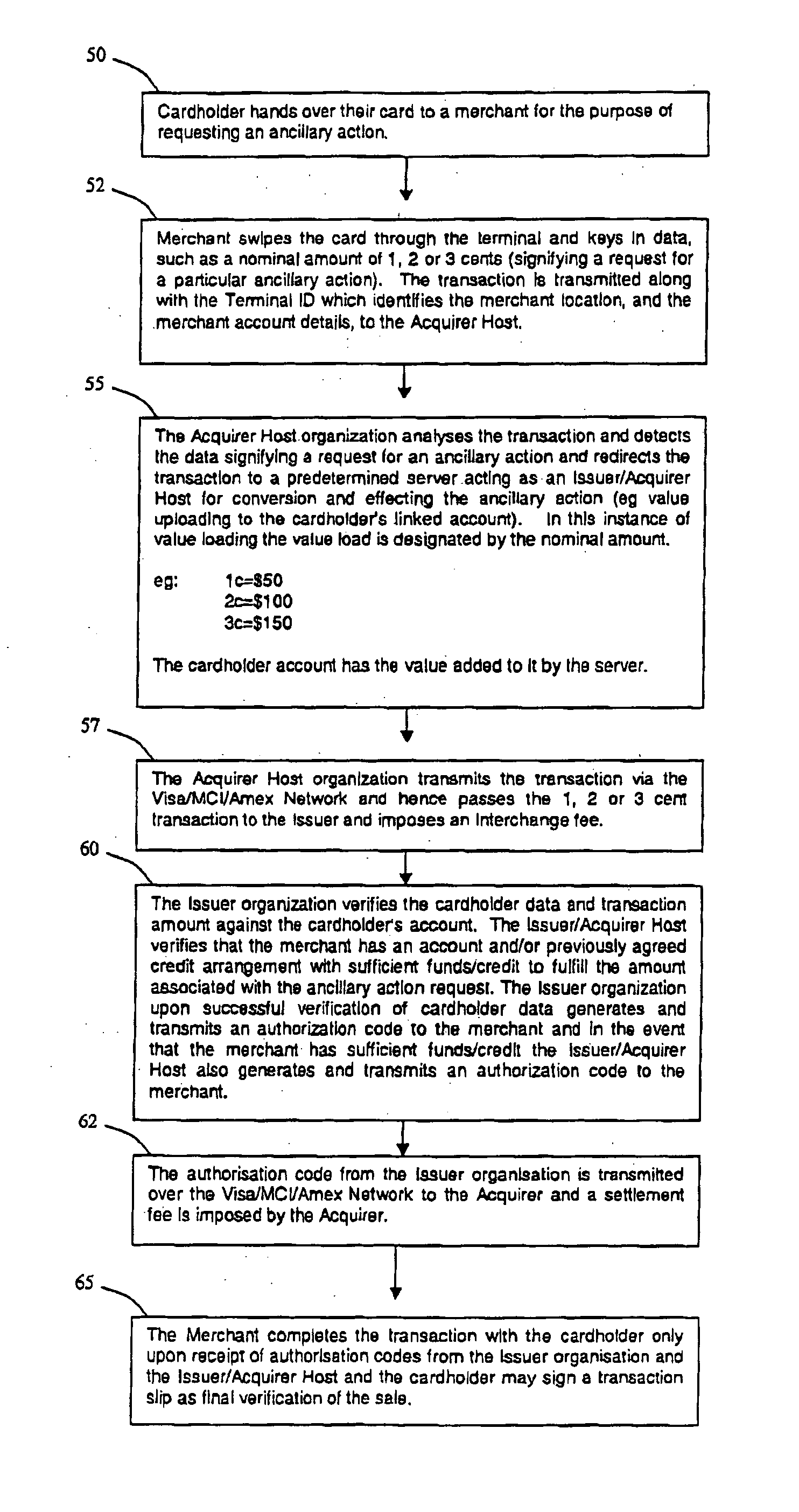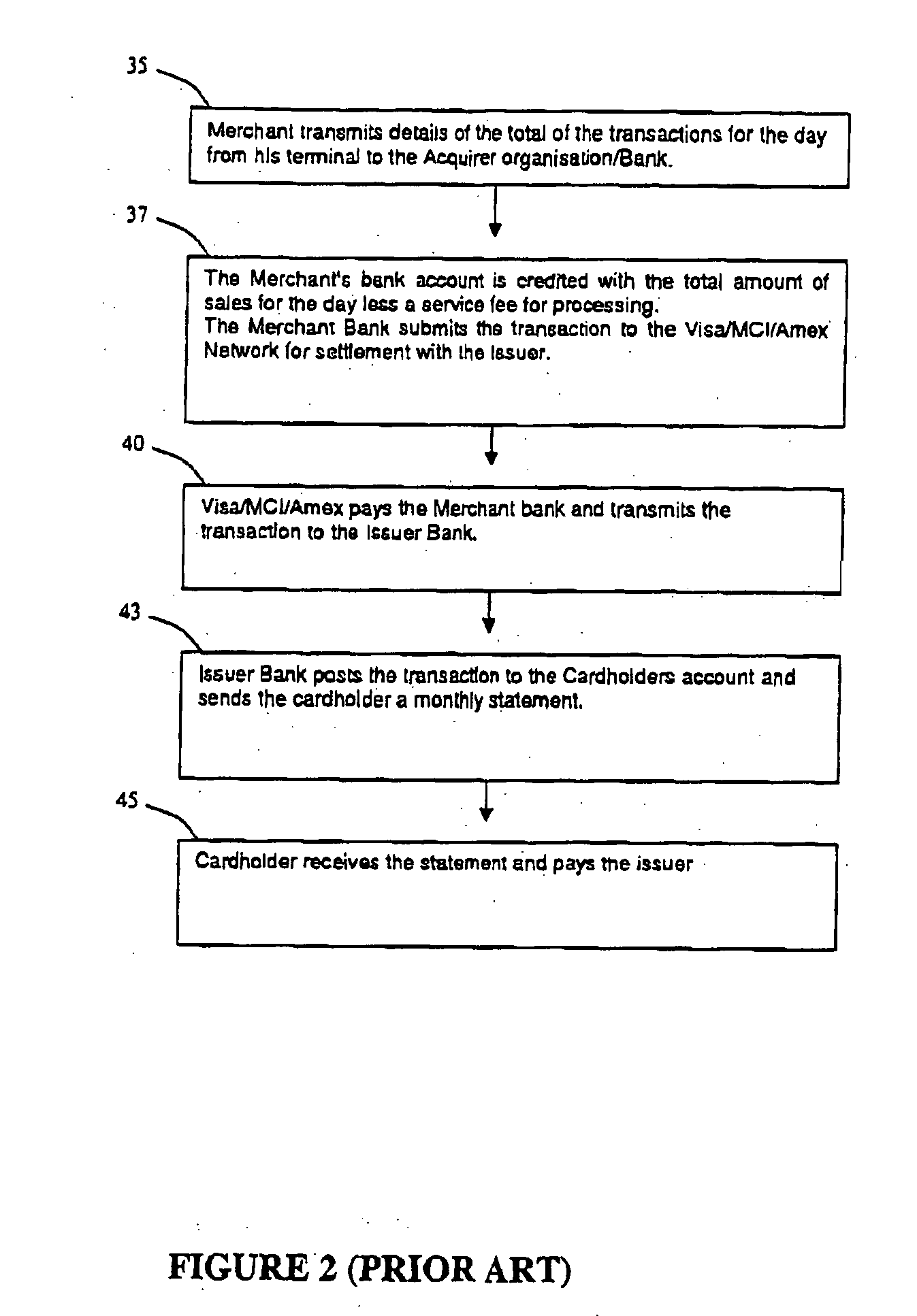Effecting ancillary actions on a transaction network
a transaction network and ancillary action technology, applied in the field of pos network operation, can solve the problems of not supporting other actions that are also considered useful, not being able to transfer (or withdraw) more funds, and complicated cost associated with upgrading an entire transaction network
- Summary
- Abstract
- Description
- Claims
- Application Information
AI Technical Summary
Benefits of technology
Problems solved by technology
Method used
Image
Examples
second embodiment
[0109] In a second embodiment, a merchant carrying a merchant card 112 would effect the transaction at the POS access point 102 either by a cash register (not shown) or similar device connected to the POS network or by card reader 104, in this instance, customer card 110 is inserted into card reader 104, and the details are verified by authorisation server 108 as previously mentioned. Data, such as a monetary value, would be entered at the POS access point 102 either through the cash register or keypad 109 of card reader 104 and if valid, the POS transaction is sent to the authorisation server 108. If the ancillary action is verified a success response is transmitted back to the terminal. Upon receiving the successful response at the terminal the Merchant then enters their merchant card 112 into the card reader 104. The merchant may have a selection of cards with each card representing a different amount such as $10.00, $20.00, $30.00 or $50.00 for increasing the value of the accoun...
third embodiment
[0110] A third embodiment enables a user to add any whole dollar amount to their account. Again, customer card 110 is inserted into card reader 104, when prompted for the customers PIN the Merchant enters the amount required for the ancillary action, The information is transmitted to transaction acquiring server 122 and the authorisation server 108 for verification. Data representing a request for an ancillary action such as a monetary value is extracted from the PIN field and added to the customers account, For example, a PIN of 0030 corresponds to a $30.00 increase to the customer's account.
[0111] Alternatively, the PIN may correspond to a dollar amount that is in excess of the amount that will be credited to a customer's account with the difference being to cover costs associated with providing the service of ancillary actions to a customer.
[0112] In preferred embodiments, the monetary amount corresponding to any ancillary action is collected from a Merchant either from a pre-fu...
PUM
 Login to View More
Login to View More Abstract
Description
Claims
Application Information
 Login to View More
Login to View More - R&D
- Intellectual Property
- Life Sciences
- Materials
- Tech Scout
- Unparalleled Data Quality
- Higher Quality Content
- 60% Fewer Hallucinations
Browse by: Latest US Patents, China's latest patents, Technical Efficacy Thesaurus, Application Domain, Technology Topic, Popular Technical Reports.
© 2025 PatSnap. All rights reserved.Legal|Privacy policy|Modern Slavery Act Transparency Statement|Sitemap|About US| Contact US: help@patsnap.com



